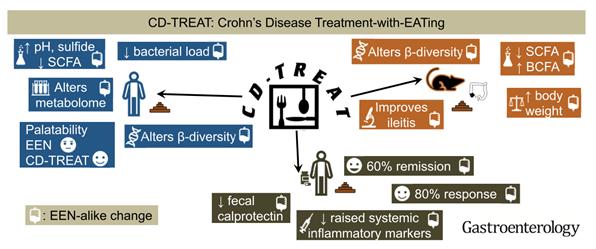
5 minute read
Food be thy Medicine: Microbiome as a Therapeutic Target and New Frontier for Research
Jed F. Calata, MD
From the colloquial wisdom of ‘you are what you eat’ to Hippocrates supposedly coining the phrase ‘let thy food be thy medicine and thy medicine be thy food’, health and diet have long been associated together and is a central element to many traditional forms of medicine. And like many other examples in history, as we have come to better understand human physiology and disease, we have grown to appreciate traditional wisdom in modern scientific context. This, in particular, has been profound in our understanding of one of the most difficult and vexing diseases we treat in colorectal surgery, inflammatory bowel disease (IBD).
Although historically regarded as a disease of westernized nations, the global spread of IBD has gone beyond borders as we are seeing increasing incidence worldwide.[1,2] The growing incidence of ulcerative colitis seen in newly industrialized countries in the far east nearly exactly mirrors the growing incidence of ulcerative colitis seen in the western world after the industrial revolution.[1] While we do know that genetics play a role in the development of IBD, it is unlikely to be the sole driver behind this change, implicating the urbanization of diet, lifestyle, and environments as important factors. Alteration of the intestinal microbiome is one of the proposed mechanisms that may be enacting these changes. Intestinal microbiome, the complex community of bacteria and organisms that reside in our gut, has an important role in IBD pathogenesis. Numerous studies have shown that IBD patients have broad changes in their intestinal microbiota profile compared to individuals without IBD.[3] The urbanization of our diet to include processed foods, animal proteins, animal fats, emulsifiers, and artificial sweeteners and is low in vegetables, fiber, and complex carbohydrates leads to a lack of microbiome diversity. In turn, this causes an opportunistic increase in mucosa associated inflammation-promoting bacteria (Figure 1).[4] This has led to new and exciting research in the development of food-based treatment of IBD. In fact, therapeutic dietary treatment of Crohn’s disease, named ‘exclusive enteral nutrition’ (EEN), is being utilized in pediatric patients and is already considered as first line therapy in Europe and Australia since 2014.[5] EEN is a polymeric or elemental enteral feed diet given as a patient’s sole dietary source, either orally or via nasogastric tube, over a 6-8 week period. EEN has been shown to be equally effective as steroids in inducing remission and mucosal healing in pediatric patients with acute Crohn’s flares; however, EEN is a very restrictive diet with difficult compliance and limited prolonged use which has affected adoption of the therapy in the United States as well as by adult patients.[5,6] To increase acceptance and overcome these barriers, a group from Scotland published a very interesting study utilizing an ‘ordinary’ food diet based on a similar nutritional profile as EEN called the CD-TREAT diet. When tested in healthy adults, they were able to produce similar microbiome shifts as seen in EEN diet patients. They further performed a pilot study treating 5 children with active Crohn’s disease with 8 weeks of the CDTREAT diet and were able to achieve clinical remission in 3 of the 5 patients, with 1 additional patient showing marked decrease in fecal calprotectin despite having some persistent mild symptoms (Figure 2).[6] These dietary therapeutic treatments highlight that what we eat can influence the health of our microbiome, and in turn, the health of our gut.

Figure 2: Crohn’s Disease Treatment with EATing (Reprinted with permission)
6
Could it really be this simple? Was your grandmother on to something much deeper when she told you to eat your peas and carrots? Is Western medicine finally catching up to the wisdom of traditional remedies? The microbiome and, in particular, the dietary influence on the microbiome are a growing target for IBD therapy and research with some very promising early results. What I find even more compelling is the possibility that microbiome induced inflammation may be playing a role in the outcomes of non-IBD surgical patients and is a research target that may help us continue to improve operative outcomes in the future.
FOR ADDITIONAL INFORMATION on this topic, visit mcw.edu/ surgery or contact Dr. Jed Calata at jcalata@mcw.edu.
REFERENCES
1. Ng SC, Kaplan GG. Understanding and Preventing the Global Increase of Inflammatory Bowel disease. Gastroenterology. 2017 Jun;152(8):2084
2. Ng SC, Shi HY, Hamidi N, et al. “Worldwide incidence and prevalence of inflammatory bowel disease in the 21st century: a systematic review of population-based studies” Lancet. 2017; 390(10114): 2769-2778.
3. De Cruz P, Prideaux L, Wagner J, et al. Characterization of the gastrointestinal microbiota in health and inflammatory disease. Inflamm Bowel Dis. 2012; 18:372-390
4. Zuo T, Kamm MA, Colombel JF, et al. Urbanization and the gut microbiota in health and inflammatory bowel disease. Nat Reve Gastroentrol Hepatol. 2018 Jul; 15(7):440-452
5. Ashton JJ, Gavin J, Beattie RM. Exclusive enteral nutrition in Crohn’s disease: Evidence and practicalities. Clinical Nutrition. 2018. 38(2019): 80-89
6. Svolos V, Hansen R, Nichols B, et al. Treatment of Active Crohn’s Disease with an Ordinary Food-based diet that replicates Exclusive Enteral Nutrition. Gastroentrology. 2019; 156:1354-1367



